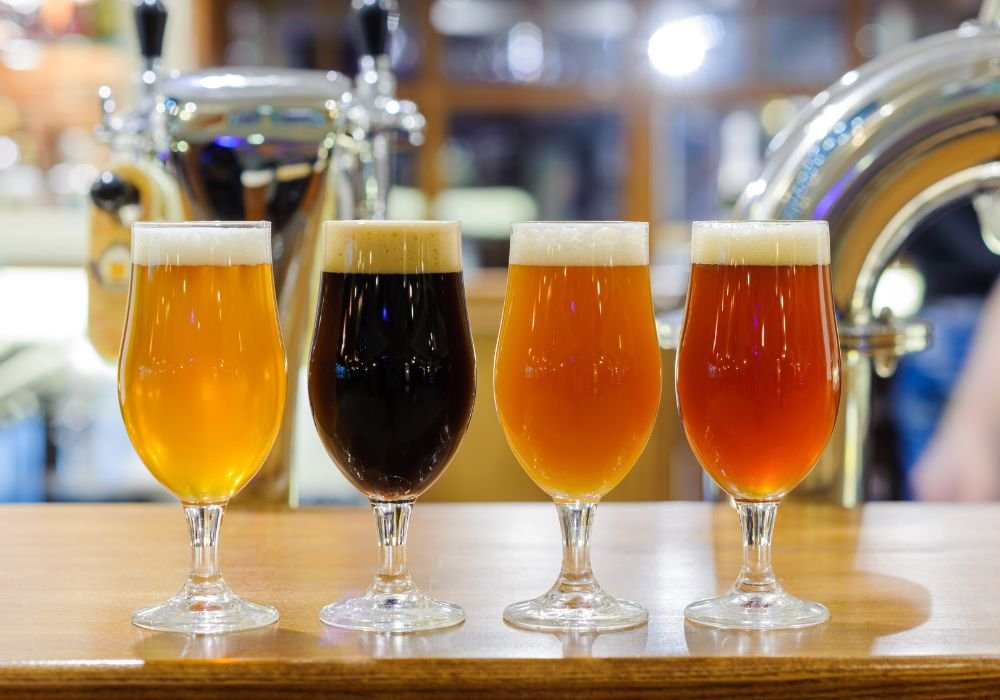How Hop Terroir Affects Aroma and Flavour Profiles of Beers

Have you ever pondered the intriguing impact of factors like soil, climate, and geographic location on the beloved flavours and aromas we associate with our favourite beverages? Just as the wine industry defines “terroir” as the influence of a specific region, soil, climate, and environment on the flavour of wine, it is believed that “terroir” imparts distinctive characteristics to hops.
Welcome to the captivating concept of “hop terroir,” where the conditions in which hops are grown play a pivotal role in shaping the taste profiles of our cherished brews. Hop terroir essentially delves into how the environment affects the flavour of beer.
Essentially, terroir refers to the amalgamation of environmental elements that give a specific agricultural product its individual qualities. For hop cultivation, these elements encompass the local climate, the composition of the soil, and the traditions of the region where the hops are grown. Recognizing the significance of terroir is of utmost importance for both brewers and hop growers. By acknowledging how these environmental factors mould the essence of hops, we can gain a deeper appreciation for the intricate flavours in our favourite beers. This understanding also fosters a profound connection to the very land where these essential brewing ingredients are nurtured.

The Impact of Terroir on Hop Aroma and Flavor Profiles
Terroir, a concept traditionally associated with wine, is increasingly recognized as a critical factor in the world of hops. Just as it influences the taste of wine, terroir plays a significant role in shaping the aroma and flavour profiles of hops. Here’s a closer look at how the environment in which hops are grown can lead to distinctive sensory characteristics:
Soil Composition
The mineral composition and structure of the soil have a profound effect on the nutrients available to hop plants. This, in turn, influences the chemical composition of the hop cones. Different soil types can lead to variations in essential oils and compounds responsible for the unique hop aromas and flavours.
Climate and Weather
The local climate, including temperature, rainfall, and sunlight, humidity directly impacts hop growth. These factors, in turn, play a crucial role in shaping the aroma and flavor of hops when they are used in brewing beer. For instance, changes in temperature can influence the essential oils in hop cones, which are essential for creating the delightful aromas we all appreciate. Hops in warmer, sunnier regions may produce oils and compounds that result in citrusy, fruity, or resinous flavours, while those in cooler, wetter climates might exhibit different aromatic profiles.
Microbial influences are also noteworthy. Beneficial microbes living in the soil contribute to genetic diversity by breaking down organic matter into nutrients that support the growth of hop plants. These microorganisms contribute to the creation of unique flavors that are distinct to each region where hops are grown. Furthermore, the genetic diversity among various hop varieties means that certain types are better suited to thrive in specific climate conditions, ensuring a wide variety of distinctive brews for all of us to savor.

Geographic Location
The geographical location of hop farms, including their proximity to bodies of water, elevation, and latitude, can create microclimates that further differentiate the characteristics of hops. Terroir-driven influences are especially evident when comparing hops from different regions.
Consider, for example, hops grown at higher altitudes, which often exhibit more robust flavors due to increased exposure to UV light. On sloping terrain, hops benefit from better drainage and enhanced air circulation, influencing their overall quality.
Cultivation Techniques
It’s essential to appreciate that the way we harvest and process hops plays a substantial role in maintaining the excellence of craft beers, as it can significantly shape the taste, appearance, and overall quality of the final product. The choices made by hop growers in terms of planting, pruning, and harvesting can impact the final flavour and aroma profiles of the hops. When striving for the best hop characteristics, the timing of the harvest and the drying methods employed are critical considerations.
Preserving ecosystems and promoting biodiversity are crucial elements in the cultivation of unique hop characteristics, which in turn have a profound influence on the delightful aromas and flavors we savor in our beer.
In summary, terroir isn’t limited to grapes and wine; it extends to hops as well. Hop terroir showcases how the interplay of soil, climate, and geography moulds the essence of hops and imparts unique aroma and flavour profiles. Brewers and hop enthusiasts are increasingly valuing this concept as they seek to craft beers with distinct and captivating characters, all thanks to the natural influence of terroir on these essential brewing ingredients.



